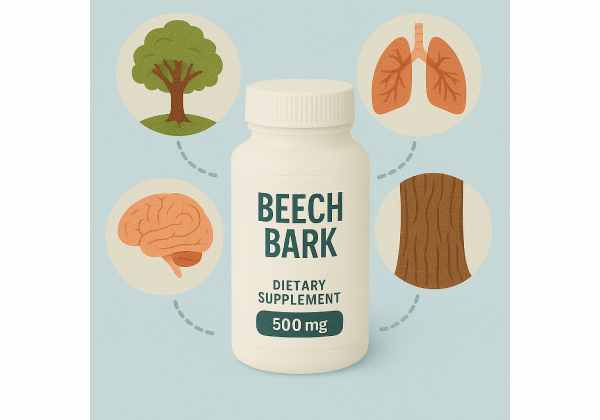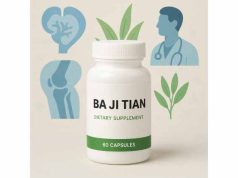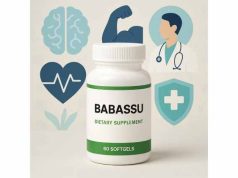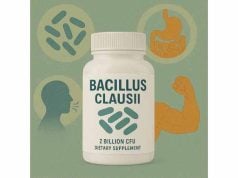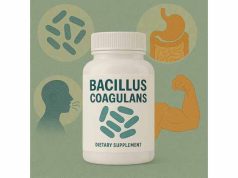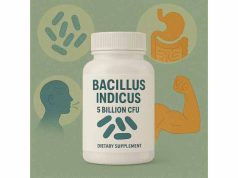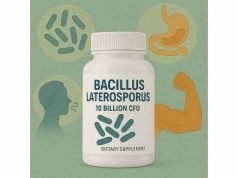Can a tree’s outer layer really support your health? Beech bark, long valued in traditional remedies, is now gaining attention for its antioxidant, anti-inflammatory, and digestive benefits. If you’ve wondered whether this natural supplement might help with chronic inflammation, gut health, or even skin wellness, you’re in the right place. Modern science is uncovering bioactive compounds in beech bark that may boost immunity and support overall wellness. Let’s explore what beech bark is, how it works in the body, its key evidence-based benefits, the safest ways to use it, and what to watch out for. This comprehensive guide walks you through the facts, risks, and frequently asked questions—empowering you to decide if beech bark deserves a place in your supplement routine.
Key Takeaways
- Beech bark is rich in antioxidants, polyphenols, and anti-inflammatory compounds.
- Traditional uses include digestive support, immune modulation, and skin health benefits.
- New research suggests potential in gut healing and natural detoxification.
- Not all beech bark products are equal—purity and quality greatly impact effectiveness and safety.
- Always consult a healthcare provider before using, especially if you have allergies or take prescription medications.
Table of Contents
- What Is Beech Bark and How Is It Used in Natural Health?
- How Beech Bark Works Inside the Body: Biological Effects and Active Compounds
- Evidence-Based Benefits of Beech Bark for Wellness and Disease Prevention
- Safety Profile, Side Effects, and Drug Interactions of Beech Bark
- Beech Bark Dosage, Usage Guidelines, and Administration Tips
- Frequently Asked Questions About Beech Bark
What Is Beech Bark and How Is It Used in Natural Health?
Beech bark—derived from the smooth, gray outer covering of the European beech tree (Fagus sylvatica) or the American beech (Fagus grandifolia)—has a rich legacy in traditional wellness practices. While most people know beech for its towering presence in forests or its use in furniture, its bark has quietly played an important role in herbal medicine across Europe and North America for centuries.
A Brief History of Beech Bark in Traditional Remedies
In European folk medicine, beech bark was often brewed as a tea or made into tinctures to address a range of ailments:
- Soothing digestive discomforts like bloating and mild diarrhea
- Easing symptoms of colds and coughs
- Supporting liver and kidney health as a mild detoxifier
Native American healers similarly used beech bark infusions to promote wound healing and reduce inflammation from minor injuries.
Modern Forms and Preparations
Today, you’ll find beech bark available in several forms:
- Dried bark for teas or decoctions
- Powdered extracts for capsules or tablets
- Tinctures and liquid extracts for oral use
- Ingredient in multi-herb supplements targeting digestion, detoxification, or immune support
Each form delivers slightly different concentrations of active compounds. Liquid extracts tend to provide higher potency, while teas and powders are favored for gentler, daily support.
What Makes Beech Bark Unique Among Tree Bark Supplements?
Beech bark is distinct from other barks like willow or pine due to its specific blend of polyphenols, triterpenes, and volatile oils. These natural chemicals have been studied for their antioxidant and anti-inflammatory effects, setting beech bark apart as a unique botanical for those interested in gentle but broad-spectrum support.
Traditional Uses vs. Modern Science
Many of beech bark’s historical uses—like calming upset stomachs or soothing inflamed skin—are now being investigated for their underlying mechanisms. Researchers are especially interested in the way beech bark may help:
- Support gut barrier integrity (preventing “leaky gut”)
- Modulate immune cell activity in response to infection or injury
- Reduce oxidative stress, a major contributor to chronic disease
How Is Beech Bark Collected and Processed?
Ethically harvested beech bark is taken from mature trees without damaging the core, ensuring sustainability. After collection, the bark is typically dried and milled before being processed into supplements or extracts.
Why Are People Seeking Out Beech Bark Now?
With rising interest in natural wellness, many are turning to plant-based remedies with long track records. Beech bark’s versatility and safety—paired with new research on its bioactive components—are making it a popular addition to herbal medicine cabinets and supplement regimens.
Key Points to Remember
- Beech bark’s benefits depend on the quality of harvest and extraction.
- Always choose products from reputable brands that perform purity testing.
- Beech bark is not a “miracle cure” but may be a helpful addition for holistic wellness.
As we move forward, let’s take a closer look at what’s actually inside beech bark and how these compounds interact with your body’s systems.
How Beech Bark Works Inside the Body: Biological Effects and Active Compounds
To understand beech bark’s health potential, it’s essential to explore its chemical makeup. What gives beech bark its healing properties? The answer lies in its rich content of natural phytochemicals—biologically active plant compounds that work together to support the body.
Major Bioactive Compounds in Beech Bark
- Polyphenols and Flavonoids:
These antioxidants protect cells from free radical damage, a key factor in aging and chronic disease. Flavonoids also help regulate inflammation and immune function, providing wide-ranging benefits. - Triterpenes:
Triterpenes are plant-derived molecules with anti-inflammatory and antimicrobial properties. In beech bark, they may help dampen excessive immune responses, protect tissues, and contribute to gut healing. - Volatile Oils and Essential Acids:
These compounds give beech bark its subtle aroma and are believed to contribute mild antimicrobial effects, supporting skin health and defending against pathogens. - Lignans and Saponins:
Less studied but still significant, these molecules may help balance cholesterol, support detoxification pathways in the liver, and modulate hormonal activity.
How Do These Compounds Affect the Body?
When you consume beech bark—whether as a tea, capsule, or tincture—its compounds are absorbed and circulated to target tissues:
- Antioxidant action: Polyphenols and flavonoids neutralize free radicals, reducing cell damage and oxidative stress that can lead to chronic illness.
- Anti-inflammatory effect: Triterpenes and certain flavonoids inhibit enzymes and signaling molecules that drive inflammation, making beech bark useful for joint and skin health.
- Support for gut lining: Some studies suggest beech bark compounds can strengthen the intestinal barrier, limiting the entry of toxins and supporting healthy digestion.
- Mild antimicrobial activity: Volatile oils may help inhibit the growth of harmful bacteria on the skin and in the gut, although this effect is modest compared to stronger botanicals.
How Does Beech Bark Compare to Other Herbal Remedies?
Unlike potent pharmaceuticals or even some stronger herbal extracts, beech bark offers a gentle, “tonic” approach. Its compounds work subtly but consistently over time, making it well-suited for those seeking ongoing support rather than immediate relief of acute symptoms.
Bioavailability and Absorption
- Water-based extracts (like teas) best deliver the bark’s polyphenols and some flavonoids.
- Alcohol-based tinctures may extract a broader range of triterpenes and essential oils.
- Encapsulated powders provide convenience, but absorption may be lower unless standardized for key compounds.
Synergy With Other Herbs
Beech bark is often paired with herbs like slippery elm, licorice root, or dandelion in gut health or detox blends, as their combined actions may enhance overall effects.
Potential Mechanisms Highlighted by Research
Emerging studies indicate that beech bark’s unique blend of antioxidants and triterpenes may:
- Lower levels of inflammatory markers in the blood
- Reduce the activity of enzymes linked to tissue breakdown
- Support collagen formation, aiding in wound healing and skin resilience
Limitations and Gaps in Knowledge
While animal and lab studies are promising, more high-quality clinical trials are needed to fully confirm beech bark’s effects in humans. Individual response can vary based on genetics, gut health, and the form of supplement used.
Understanding how beech bark’s components work together sets the stage for appreciating its benefits. In the next section, we’ll look closely at real-world uses and the evidence behind them.
Evidence-Based Benefits of Beech Bark for Wellness and Disease Prevention
Beech bark’s appeal as a supplement lies in its history of use for a variety of ailments and its growing recognition in modern natural health research. Here, we’ll explore the top evidence-backed benefits that make beech bark an intriguing option for wellness-minded individuals.
Digestive Health and Gut Protection
Beech bark tea and extracts are traditionally used to soothe the digestive tract. Recent studies suggest several ways it may help:
- Strengthening the gut barrier: Flavonoids and polyphenols support the lining of the intestines, potentially reducing “leaky gut” and improving nutrient absorption.
- Easing mild digestive upset: The astringent nature of beech bark may help calm loose stools and mild diarrhea.
- Supporting microbiome balance: Its mild antimicrobial action can help curb overgrowth of unwanted bacteria, though it does not act as a broad-spectrum antibiotic.
Immune System Modulation
Compounds in beech bark appear to have a balancing effect on the immune system. Instead of simply stimulating or suppressing immunity, beech bark helps “modulate” the response, meaning it can enhance immune defenses during illness while reducing overactive inflammation in healthy tissues.
- May reduce frequency of mild infections: Users report fewer seasonal illnesses when taking beech bark regularly.
- Helpful for autoimmune-prone individuals: The gentle immune-calming effect is of interest to those with inflammatory conditions, though clinical guidance is essential.
Skin and Wound Healing Benefits
Beech bark’s antioxidant content is also beneficial for skin health. Traditional and emerging uses include:
- Topical applications: Beech bark-infused creams or poultices may help speed healing of minor cuts, scrapes, or rashes.
- Reducing skin redness: Its anti-inflammatory action helps soothe irritated skin, making it a candidate ingredient for sensitive skin care formulas.
- Supporting collagen: Some research points to beech bark’s ability to promote collagen production, contributing to skin resilience and youthful appearance.
Anti-Inflammatory and Antioxidant Effects
Ongoing inflammation and oxidative stress underlie many chronic health problems. Beech bark provides dual action:
- Antioxidants neutralize free radicals: This protects tissues from the damage associated with aging and chronic disease.
- Reduces inflammatory markers: Early studies show lowered blood levels of C-reactive protein (CRP) and other inflammatory molecules with beech bark supplementation.
Potential for Cardiovascular and Liver Support
Though research is early, some findings indicate beech bark’s triterpenes and polyphenols may:
- Support healthy cholesterol levels
- Aid in liver detoxification pathways
- Promote circulation by protecting blood vessels from oxidative damage
Who May Benefit From Beech Bark?
- Individuals with mild digestive issues, especially related to inflammation
- Those seeking immune balance and overall wellness
- People interested in natural skin support and wound healing
- Anyone exposed to oxidative stress (pollution, high-intensity exercise, chronic illness)
Limitations and Realistic Expectations
While beech bark shows promise, it should not be viewed as a primary treatment for serious diseases. Most benefits are best realized with consistent, long-term use as part of a broader healthy lifestyle. Consult your doctor if you have chronic conditions or are on medication.
Comparing Beech Bark to Other Natural Remedies
Compared to stronger herbs (like goldenseal or echinacea), beech bark is less likely to cause overstimulation or harsh side effects. Its gentle, multipurpose nature makes it suitable for daily wellness, particularly for those sensitive to more potent botanicals.
With these benefits in mind, it’s essential to understand beech bark’s safety profile and how to minimize potential risks. The next section will explore these in detail, providing the foundation for responsible and informed use.
Safety Profile, Side Effects, and Drug Interactions of Beech Bark
While beech bark is often regarded as a gentle and well-tolerated supplement, it’s important to recognize that “natural” doesn’t always mean risk-free. Like all botanicals, beech bark can produce side effects, interact with medications, and trigger allergic responses in some individuals. Let’s break down the current evidence on beech bark’s safety, including who should avoid it and how to use it responsibly.
Common Side Effects and Tolerability
Most people who use beech bark—whether as tea, tincture, or capsule—report few adverse effects when following proper dosage guidelines. Mild, self-limiting side effects may include:
- Temporary stomach upset, nausea, or mild diarrhea (especially at higher doses)
- Dry mouth or mild throat irritation
- Rarely, skin rash or itching if applied topically
These effects tend to resolve quickly and are most likely to occur with very concentrated extracts or when first introducing the supplement.
Allergic Reactions and Sensitivity
Individuals with a history of allergies to tree pollens, especially beech or related species (like birch), should be cautious. Signs of an allergic reaction can include:
- Itching, hives, or rash
- Swelling of the lips, tongue, or face
- Difficulty breathing or wheezing
If you experience any of these symptoms after taking beech bark, discontinue use immediately and seek medical attention.
Who Should Not Use Beech Bark?
Certain populations should avoid beech bark or consult a healthcare provider before use:
- Pregnant or breastfeeding women (due to lack of safety data)
- Children under age 12, unless recommended by a qualified practitioner
- Individuals with known allergies to beech or related tree species
- Anyone with a history of severe allergic reactions to herbal supplements
Potential Drug Interactions
Beech bark’s antioxidant and anti-inflammatory actions may affect how certain medications work in the body. Notable potential interactions include:
- Anticoagulants (blood thinners): There’s a theoretical risk of increased bleeding, especially when combined with herbs or drugs that also affect clotting (like warfarin or aspirin).
- Immunosuppressants: Since beech bark modulates immune function, it may alter the effects of drugs designed to suppress immunity after organ transplantation or for autoimmune disease.
- Liver-metabolized medications: High doses of antioxidants can occasionally affect the metabolism of some medications, though this is more relevant with long-term, concentrated use.
Tips for Reducing Risk
- Start low, go slow: Begin with the lowest recommended dose to monitor for sensitivity.
- Use single-ingredient products at first: This helps identify any reactions attributable to beech bark specifically.
- Consult your healthcare provider: Especially if you are on prescription medication, have chronic health conditions, or are immunocompromised.
- Purchase from reputable suppliers: High-quality products reduce the risk of contamination or mislabeled ingredients.
Symptoms That Warrant Immediate Medical Attention
- Swelling of the face, lips, tongue, or throat
- Trouble breathing or swallowing
- Severe abdominal pain, vomiting, or persistent diarrhea
- Signs of jaundice (yellowing of skin/eyes) or dark urine (possible liver involvement)
Long-Term Use and Safety
There is currently no evidence of toxicity with moderate, responsible use of beech bark. However, long-term studies are limited, so taking periodic breaks from supplementation is wise, especially if used daily for several months.
Special Considerations for Topical Use
Beech bark salves and creams are generally safe but should be patch-tested before widespread application, particularly for those with sensitive or allergy-prone skin. Discontinue if redness, irritation, or itching occurs.
Environmental and Sourcing Considerations
Sustainably harvested beech bark reduces environmental impact and ensures cleaner, more effective products. Always verify that your supplement supplier uses ethical sourcing practices and transparent quality control.
Understanding the potential risks and how to avoid them is the foundation of safe supplementation. Next, let’s explore how to use beech bark effectively—covering dosage, timing, and the different ways you can incorporate this versatile supplement into your wellness routine.
Beech Bark Dosage, Usage Guidelines, and Administration Tips
Choosing the right dose and form of beech bark is essential for maximizing benefits while minimizing risk. Because beech bark comes in multiple formats and concentrations, dosage and administration should be tailored to your goals, health status, and product specifics. Here’s a detailed guide to using beech bark safely and effectively.
General Dosage Recommendations
There’s no universal dosage for beech bark—most recommendations come from traditional use, emerging research, and practical clinical experience. Common forms and general guidance include:
- Beech Bark Tea:
- Preparation: Simmer 1–2 teaspoons (about 2–4 grams) of dried bark in 1 cup (250 ml) water for 10–15 minutes.
- Frequency: 1–2 cups per day, best taken between meals for digestive benefits.
- Powdered Extracts and Capsules:
- Standard dose: 250–500 mg once or twice daily, depending on the concentration and intended use.
- Always follow product label instructions or consult your healthcare provider.
- Tinctures and Liquid Extracts:
- Usual dosage: 1–2 ml (about 20–40 drops), 1–3 times daily, diluted in water or juice.
- Topical Applications:
- Beech bark-infused creams or salves: Apply a thin layer to affected skin areas 1–3 times per day, after patch-testing.
Best Practices for Administration
- Start with the lowest effective dose and increase gradually as needed.
- Use consistently for several weeks to assess effects—herbal supplements often work best over time.
- Monitor for side effects, especially during the first week of use.
- Pair with other supportive herbs (such as licorice, dandelion, or marshmallow root) for enhanced gut or skin support, if desired.
When to Take Beech Bark
- Digestive support: Take tea or capsules 30–60 minutes before meals.
- General wellness: Morning or midday dosing is preferred.
- Skin health: Apply topical formulas after cleansing, and avoid use on open wounds without professional guidance.
How Long Does It Take to Notice Results?
- Digestive comfort or mild immune support: Some users report improvement within a few days.
- Skin health: Topical benefits may appear after 1–2 weeks of consistent use.
- Deeper benefits (antioxidant or anti-inflammatory effects): Best measured after several weeks to months of regular supplementation.
Should You Cycle Beech Bark?
To avoid potential tolerance or mild side effects, many herbalists suggest taking breaks (for example, using beech bark for 6–8 weeks, then pausing for 1–2 weeks before resuming).
Combining Beech Bark With Other Supplements
Beech bark is considered safe to use with most vitamins, minerals, and herbs. However, combining it with strong immune-boosting or blood-thinning herbs should be supervised by a qualified practitioner.
Signs You May Need to Adjust Your Dose
- Persistent digestive upset, rash, or other unwanted effects
- Lack of improvement after several weeks
- Use of new medications or changes in health status
In these cases, consult your healthcare provider for guidance. Always prioritize quality, transparency, and professional support when incorporating beech bark or any supplement into your regimen.
Next, let’s answer the most pressing and commonly searched questions about beech bark—giving you clear, expert-backed answers to help you make informed choices.
Frequently Asked Questions About Beech Bark
What are the main benefits of beech bark supplements?
Beech bark supplements may help soothe digestive upset, reduce inflammation, and provide antioxidant support. They are also used to promote immune balance and support healthy skin, especially in people seeking gentle, plant-based wellness options.
Is beech bark safe for daily use?
Beech bark is generally safe for most adults when taken as directed. However, individuals with allergies to beech trees or related species should avoid it. Consult a healthcare provider before starting daily use, especially if you are pregnant, breastfeeding, or taking medication.
Can beech bark help with skin conditions?
Beech bark is used in topical creams to calm redness, promote wound healing, and support skin resilience. While evidence is promising, results vary by individual and condition. Patch test first, and consult a dermatologist for chronic or serious skin concerns.
Does beech bark interact with prescription medications?
Beech bark may interact with blood thinners, immunosuppressants, and some liver-metabolized drugs. Always inform your doctor about all supplements you use to avoid unwanted interactions or side effects.
How do I choose a high-quality beech bark supplement?
Look for products from reputable brands with third-party purity and potency testing. Check that beech bark is sustainably harvested and the form matches your intended use (tea, extract, capsule). Avoid proprietary blends with undisclosed amounts.
Can children or pregnant women use beech bark?
Safety for children and pregnant or breastfeeding women is not well established. Avoid use in these groups unless supervised by a qualified healthcare professional.
How quickly will I notice the effects of beech bark?
Digestive and skin benefits may be noticed within a few days to weeks, while antioxidant and anti-inflammatory effects are typically felt after consistent use over a month or more.
Disclaimer:
This guide is for educational purposes only and should not be considered a substitute for professional medical advice, diagnosis, or treatment. Always consult your healthcare provider before beginning any new supplement, especially if you have underlying health conditions or take prescription medications.
If you found this article helpful, please share it on Facebook, X (formerly Twitter), or your favorite platform—and follow us on social media. Your support enables us to keep providing accurate, up-to-date wellness content for everyone!


